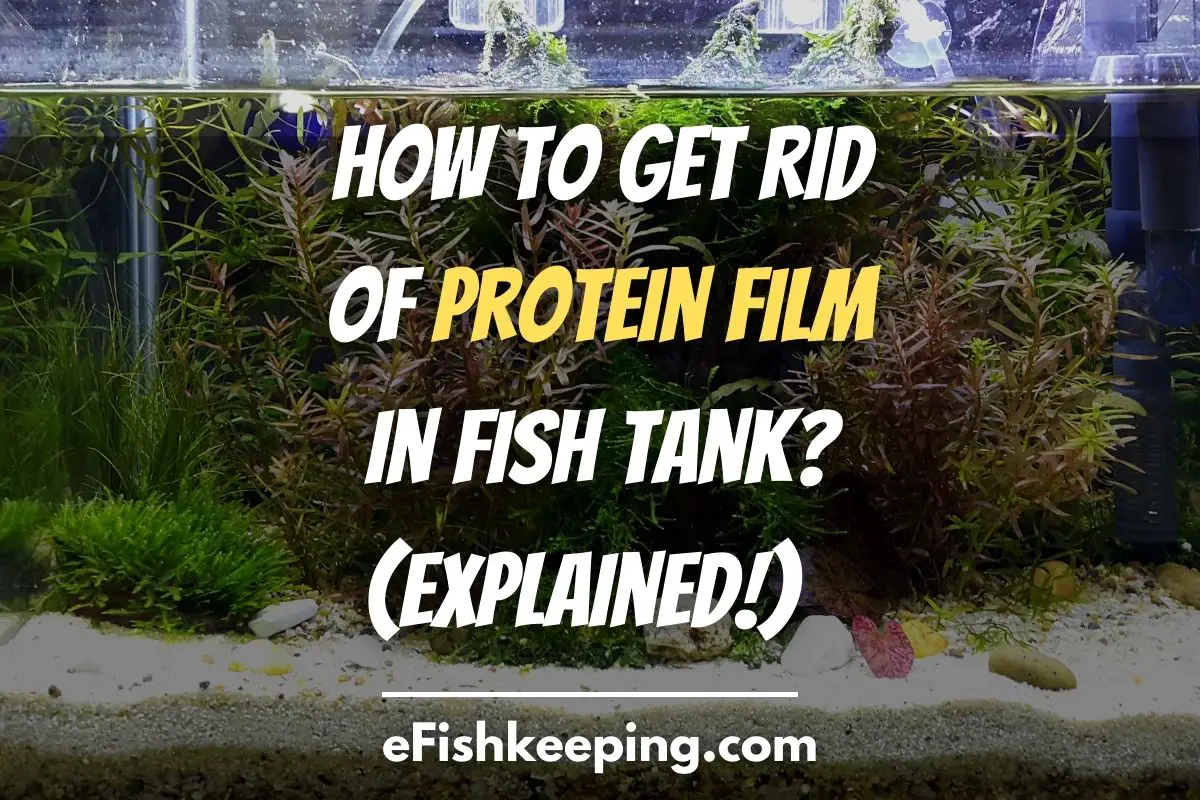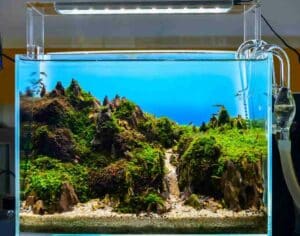Fish tanks, especially their tops, tend to show accumulated proteins in the form of a thick film.
In this article, we will go over ways to get rid of protein films in fish tanks, along with easy methods to keep such accumulated filth at bay.
This Is How You Get Rid Of Protein Films
The major cause of such films appearing in your fish tank is a lack of proper aeration. Surface agitation with help from water filters and aerators will help disperse any junk buildup, preventing layers from forming. Spending on good-quality water filters and surface skimmers will also solve the issue.
Some DIY methods exist that make the removal of such filth films easy. Read on to know all about them!
What Causes Filth Deposition?
The opaque films often seen on top of certain fish tanks come to light due to negligence of either the water’s hygiene or a lack of fish care. Some of the most common reasons are the following:
Placement of fish tank: It is very common for owners to place their aquariums in places they commonly visit.
While doing such, it is possible for fine particles of perfumes, vapors, mists, grease, and various aerosols to deposit on the fine water surface. Over time, these form a visible film on top of the water.
To avoid such settlements, it is best to place the aquarium in a place where such depositions have low chances of reaching it altogether.
Expired fish: In case you miss it, a dead fish’s indication is its body releasing oils during its decay process. These accumulate as a thin film on the water surface.
Fish’s excretion: Lack of proper water hygiene leads to the accumulation of the fish’s waste in the water which rises to the surface in the form of a layer.
Fish food: Excessive amounts of feeding may be the result of the protein films forming in the water. It’s best to keep check of the amount the fish needs and the amount of food that is given.
Human contact: If you find yourself occasionally dipping your hand in your aquarium and wonder why a thin layer on the water is often seen, you might be able to find a pattern.
The oil on your skin, in micro amounts, deposits in the water every time you touch something in the water.
A simple solution to this is to either avoid making such contacts altogether or make sure your hand is clean before you touch something in the water.
Read: How Much Seachem Prime Should I Use Per Gallon?
How Long Does It Take To Clear The Filth Away?
When using a strong filter or aerator, it normally takes 10-15 minutes to get rid of the protein film in fish tanks. On the contrary, the use of a paper towel to manually remove the visible film will take a maximum of 5 minutes, depending on the film’s thickness.
Extensive cleaning of the fish tank depends on your time and gadgets installed. When carrying out deep cleaning of the tank (which should be done once a month), additional steps have to be taken that might take a few hours. These include:
1. Filters:
The installed filter in a fish tank can be solely credited for keeping the aquarium’s environment healthy and livable. For this reason, deep cleaning of the filter is needed to ensure its optimum functioning.
After unplugging the filter, use white vinegar along with water to remove debris. Replace the sieve and sponge in the filter. Use a soft toothbrush to clean the filter and get rid of any algae or other microbial buildup. Let it air dry before placing it back.
2. Lights:
To clean the lights in the aquarium, remove the lamp along with the bulb. Use water and white vinegar in equal amounts to clean the bulb. Let it air dry before fixing it back in place.
3. Tank Decor:
Remove, wash, and air-dry any décor in the aquarium. It is best to replace the gravel lining the tank, however, it can be reused. To do this, collect the gravel and boil it in water for 3-5 minutes. Then strain it and let it air dry. Once dried and cooled, the gravel can be placed back.
4. Tank:
- Fill the empty tank with water from a pipe, and add a bottle of white vinegar for every gallon of water added.
- Allow the mixture to soften the edges of the tank for about an hour.
- After this, remove two-thirds of this water/vinegar mixture, leaving one-third of the volume in the tank.
- Scrub the tanks inside using a soft towel or brush.
- Discard the water and rinse the tank 2 times.
- Let it air dry before placing the lights, décor, and fish back in the tank.
Note: As a fish tank owner, it is recommended to keep a spray bottle with equal proportions of water and white vinegar (1:1 ratio). This will help in occasional cleaning and will prevent debris accumulation.
How Can You Distinguish The Type Of Film?
An opaque film with a greasy texture when disturbed is often due to grease and oil deposition. This can be confirmed by shining white light on the film.
If the light is reflected and the seven colors of a rainbow are seen, this shows the layer is in fact due to oil deposition.
If the layer you see is darker in color and gives off white or gray hues, it is most likely due to protein deposition. All these layers can be removed in the same way as described above.
If the film you see gives off a strong ammonia odor, it is most likely due to organic waste buildup and can be called a biofilm.
Biofilms also form due to attacks by bacteria and fungi on the water surface. The inability of oxygen to reach the water below the film allows these microorganisms to thrive further. To prevent these, the top of the aquarium can be covered or sealed.
When Should You Replace The Water If Frequent Films Are Seen?
The water in fish tanks should be replaced every two to four weeks. This does not mean emptying the whole tank, but the removal and replacement of water in small percentages.
Once a month, 25-45% of the water should be replaced in the tank. While doing this shift, give the gravel a quick stir to aerate the tank as well.
Such maintenance does not require the fish to be removed, therefore is a quick method that should not be neglected.
It should be noted that over-extraction of water and its replacement can lead to losses of beneficial micronutrients from the water that fish need for growth and survival. Such abrasive practices should be monitored and avoided.
How Costly Is It To Maintain An Aquarium?
The price of maintenance of a fish tank depends on the type of water used for the fish. When Saltwater fish tanks are being used, the maintenance costs range between $400-$600.
However, when freshwater fish tanks are being considered, the maintenance costs range from $100-$200.
Installation of fancy filters and surface skimmers come with additional costs, but are often one-time investments and therefore are worth it.
Conclusion
Oil films are common and even natural with reference to aquariums. What you need to keep in mind is the likeliness of their occurrence decreases with your increase in care and concern for your fish tanks. The more committed you are, the cleaner and healthier the tank will be!
Recommended Next Read:
Hi! I’m Praveen Ghoshal, the founder of eFishkeeping.com. Inspired by my Dad, I got interested in fishkeeping when I was a kid. Since then, I have been involved with this hobby. Currently, I have 3 fish tanks at our home, and I enjoy this hobby with my full family. Read more about me here.







